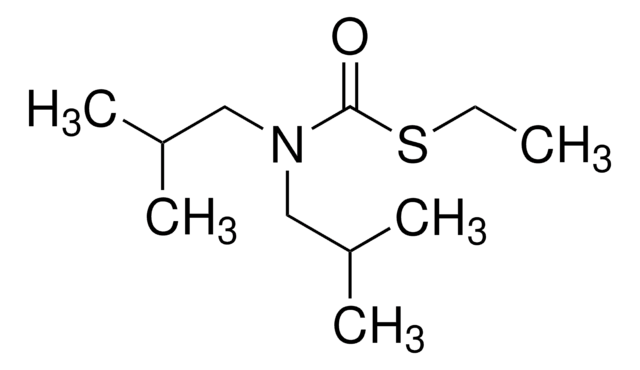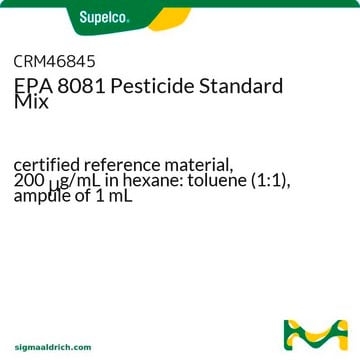48673
Aldrin solution
20 μg/mL in methanol, analytical standard
About This Item
Recommended Products
grade
analytical standard
packaging
ampule of 1 mL
concentration
20 μg/mL in methanol
technique(s)
HPLC: suitable
gas chromatography (GC): suitable
application(s)
agriculture
cleaning products
cosmetics
environmental
food and beverages
personal care
format
single component solution
SMILES string
ClC1=C(Cl)[C@]2(Cl)[C@@H]3[C@@H]4C[C@@H](C=C4)[C@@H]3[C@@]1(Cl)C2(Cl)Cl
InChI
1S/C12H8Cl6/c13-8-9(14)11(16)7-5-2-1-4(3-5)6(7)10(8,15)12(11,17)18/h1-2,4-7H,3H2/t4-,5+,6+,7-,10+,11-
InChI key
QBYJBZPUGVGKQQ-SJJAEHHWSA-N
Looking for similar products? Visit Product Comparison Guide
Application
Signal Word
Danger
Hazard Statements
Precautionary Statements
Hazard Classifications
Acute Tox. 3 Dermal - Acute Tox. 3 Inhalation - Acute Tox. 3 Oral - Flam. Liq. 2 - STOT SE 1
Target Organs
Eyes,Central nervous system
Storage Class Code
3 - Flammable liquids
WGK
WGK 2
Flash Point(F)
51.8 °F - closed cup
Flash Point(C)
11 °C - closed cup
Choose from one of the most recent versions:
Already Own This Product?
Find documentation for the products that you have recently purchased in the Document Library.
Our team of scientists has experience in all areas of research including Life Science, Material Science, Chemical Synthesis, Chromatography, Analytical and many others.
Contact Technical Service










